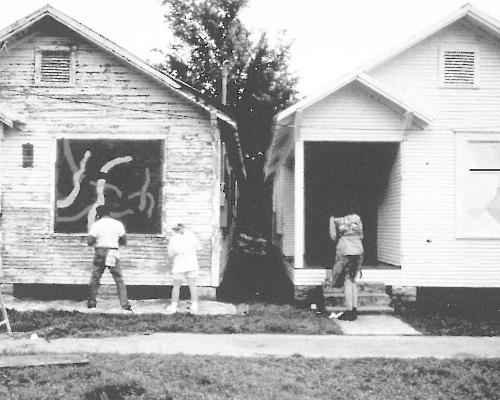A book on Hilda Rix Nicholas is long overdue. Her paintings are some of the more cherished works in public and private collections. For much of her lifetime she was enormously popular and her work was received with acclaim both in Australia and in Europe. But through a series of circumstances she became a footnote, an afterthought in standard histories of Australian art.
It is not as though she is one of the forgotten, but rather someone who has been discovered afresh several times since her death in 1961.
In 1971 Joseph Brown exhibited a full survey of her work, apparently without attracting a single review. Brown's timing was out - 1971 was the very end of that curious time warp when twentieth century conservative Australian artists, no matter their quality, were seen as passé, and women were not to be taken seriously. In 1978 Nicholas Draffin was curator for an extensive project exhibition at the Art Gallery of New South Wales, an exhibition which precipitated considerable market interest in her work. Neither of these exhibitions have been given their due as sources for John Pigot's theoretically plodding account of her life and art.
Hilda Rix Nicholas was the fortunate daughter of a mother who was an active amateur artist and a father who was a dedicated teacher. She had a sister, and no brothers to divert parental attention. Most importantly she was part of that glorious generation of early 20th century women artists. These were the daughters of the first women to be given some kind of formal education, the daughters of the first women to own property after marriage. In a very real sense these women, often portrayed as feminist pioneers, were the first beneficiaries of an older generation of feminists. When Hilda Rix travelled abroad to study art, she did so both with family, and with family support. She was encouraged to make art, and her illustrative style, first demonstrated when she was a student, continued through her maturity.
Some of her attitudes are entirely predictable. Her parents were Australian nationalists, she operated within a conservative context, therefore it is hardly surprising that she became a politically conservative Australian nationalist feminist.
It is when Rix Nicholas ventures outside the predictable path that both her art and her life take on the full-blown flavour of a Mills and Boone romance.
The 1907 trip to France was predictable. The enchantment with French peasants, already popularised by established artists was understandable, as were the journeys to Morocco. The connections between French art and exotic North Africa have been around since Napoleon. The surprise was how Morocco liberated her colour and form in the African paintings. It is almost 90 years since she painted these small oil sketches, and still the remarkable freedom of her brushwork and colour almost takes the breath away.
When she changed again it was life, not art that drove her. World War I caused Hilda Rix, her widowed mother and sister to leave for the safety of England. Within two years Hilda was alone, her mother and sister dead from enteric fever. In 1916, the same year as her mother's death, she married Major George Matson Nicholas of the Australian army. Within weeks he was killed on the slaughterfield of the western front. It is understandable that her art became bleak, almost baroque in its extravagant grief. But as well as some very moving works she also painted some truly terrible poster-like images of Australian soldiers. It is easy to forgive such paintings, as long as they are forgotten.
In the 1920s she painted idyllic landscapes of Australian rural life, landscapes populated by people not affected by war. This too was predictable, but not for the orthodox reason regurgitated by Pigot linking Rix Nicholas to J.S. MacDonald's most over -quoted essay on Aryanism in Australian art. Rix Nicholas' agenda was shaped by her wartime experiences. She painted rural Australia as a place untouched by Europe's war, a place so picturebox perfect that all who saw her paintings yearned to go there.
Life again intruded and she married a young grazier, an Australian soldier who had survived the war, Edgar Wright. Marrying Mr Right and producing her only child, a son who later became a gifted amateur artist, seemed an appropriate conclusion to her career.
It wasn't of course the end of her art, but as motherhood coincided with the Great Depression which collapsed the art market, and as graziers' wives tend to live in the country, she was hardly in a position to massage the critics and schmooze the galleries. Pigot seems to see the new domesticity of her later works as a problem in a male dominated world, and suggests this as well as the competitive nature of her feminism as reasons for her fall from fame. I suspect the truth is more complex.
For Australian artists living in the cities during the 1930s, Rix Nicholas' life in the country, as profiled in women's magazines, was an enviable state. From their perspective she did not need the patronage of purchase by galleries when others were struggling to eat. In any case taste had changed, her art and that of her generation, was no longer in fashion. In 1938 Sydney Ure Smith, that most generous of all editors, lost control of his publications after they were sold to Fairfax. The next generation of critics was decidedly hostile to "old-fashioned" art.
What is odd in Pigot's account of Rix Nicholas' last years is that he accepts without question her claim that she was given a lesser place because of her gender. In doing so he quotes from her letters to Will Ashton, a most interesting source of information on Australian art.
The reputation of an artist is longer than life. The Summer House, a painting I first saw, unframed in the artist's studio in 1976, is on the back cover of Pigot's book. He describes it as "one of Rix Nicholas' best known pictures". She is now regarded as a major Australian artist, and this is her due. Meanwhile, Will Ashton, knighted for his services to art in 1960, has now all but sunk from view, his presence a mild diversion in other narratives.












